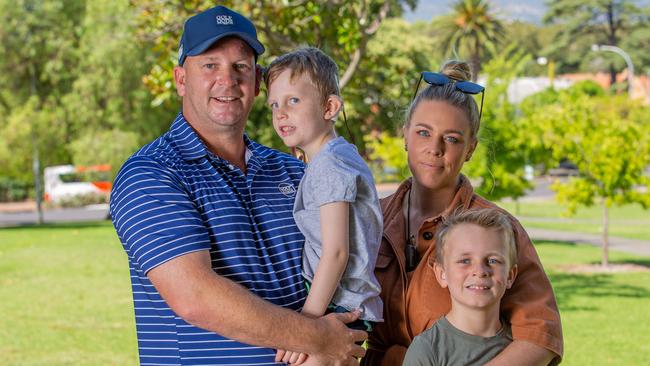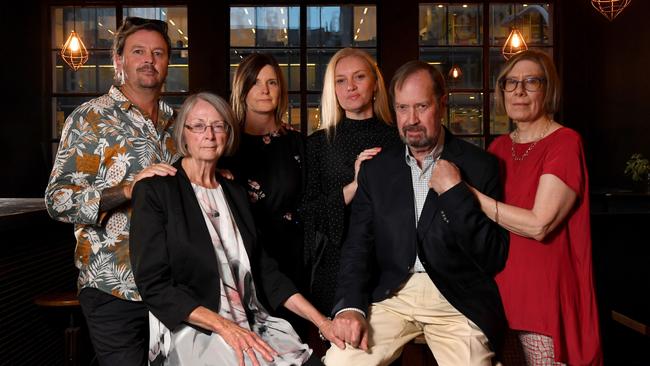South Australian public hospitals record 80,000 incidents and payout millions in compensation
There have been nearly 80,000 “incidents” at SA hospitals in just the past 12 months – on top of four other scandals, some that ended with people dying.
SA News
Don't miss out on the headlines from SA News. Followed categories will be added to My News.
Almost 80,000 “incidents” ranging from catastrophic failures causing deaths to serious mistakes with medications, dangerous falls and near misses have occurred in South Australian public hospitals in 12 months.
The 2021-22 SA Health data comes as bungles in the state’s public hospitals saw 903 patients awarded more than $140m in compensation in the past 13 years, with another 350 cases pending.
And in the wake of SA Health’s most recent monumental stuff-up.
Four SA Health medical bungles
1. The cochlear implant scandal
It’s just the latest bungle to emerge from the public health system.
At least 30 of 208 children in the Women’s and Children’s Hospital hearing program dating back 17 years had their implants incorrectly programmed, potentially leading to developmental delays.

An independent review has made 59 recommendations and the 30 families identified so far will received a one-off $50,000 payment — which does not affect their further compensation rights — and other families $5000 for the stress.
Families worried about their child’s progress were fobbed off with comments such as their child is just “slow”, the damning report found.
2. The chemotherapy debacle
Another major scandal was the chemotherapy bungle where 10 patients were given incorrect chemotherapy doses at the Royal Adelaide Hospital and Flinders Medical Centre over six months from 2014. All of the affected patients have since either died or relapsed.
One of the patients, Andrew Knox, has warned patients remain at risk of medical blunders because of a “flawed and compromised” system.
He said if the Deputy Coroner’s recommendations in the chemo bungle had been followed, action would have been taken in the cochlear implant debacle without the need again for an independent inquiry to expose the extent of the damage.
“Had this been a life-threatening treatment lives would again have been lost in the interim. It’s gobsmacking how it took the same media action to expose the error, force a further investigation, the apology, the commitment to implement recommendation,” he said.
“Until there is an adequate, common sense adverse event system and managed medical compensation legislation nothing will change. Families of victims will suffer the effects of the blunders and the indignity of fighting the system.
“The Deputy Coroner recommended/demanded that the SA Health Safety Learning System (SLS) be abandoned and replaced with an entirely new adverse-event reporting system.
“The critical replacement of the SLS will never take place meaning as patients we are trapped upon a never ended cycle of errors, commitments, delays and failures in accountability and implementation. Both this and the previous government are culpable.”

3. The BreastScreen fiasco
BreastScreen SA was involved in a bungle where dozens of breast cancers were missed in mammograms.
In December 2012 a review of 53,104 digital screening mammograms between September 6, 2010, and June 30, 2012 began because 95 fewer cancers than expected had been detected.
It revealed 72 positive cases were missed during a two-year technology changeover period.
Two women whose cancers were among 72 cases missed had died, the review revealed.
Then-health minister Jack Snelling apologised as he revealed the two deaths were among 72 whose potentially detectable cancers were missed by BreastScreen SA — one of the women had a detectable advanced stage cancer, while the cause of death of the other elderly woman could not be confirmed.
4. The false-positive prostate cancer mistake
In 2016 Mr Snelling was again apologising when releasing another damning report into a separate treatment bungle, revealed by the Sunday Mail, where 52 men received false positives for prostate cancer.
One later received “unjustified” radiotherapy treatment.
The Australian Commission on Safety and Quality in Health Care inquiry was scathing of former SA Pathology boss Ken Barr, who was immediately sacked when the issue became public, and called for a complete overhaul of the agency and its testing.
Breaking down 80,000 public hospital “incidents” in one year
Reports of public hospital “incidents” have doubled in the past decade, partly due to staff being encouraged to report any problems — including those which cause no harm — in order to learn from the situation to avoid it happening again.
While many incidents are relatively minor or are classed as near misses, five cases were classed as the most serious “sentinel events”, up from four the previous year.
These were three medication errors causing “serious harm or deaths” and two suspected suicides in acute or psychiatric wards.
Previous sentinel events in SA have included multiple cases of foreign objects being left inside patients after surgery, while nationally there have been multiple cases of surgeons operating on the wrong patient, the wrong part of a patient and performing the wrong surgical procedure.
The SA Health data for 2021-22 reveals 12,399 medication incidents such as prescribing or administering the wrong medicine or giving the wrong dose, with the most common serious mistakes involving the pain relief medications paracetamol, oxycodone and fentanyl.
SA Health recorded 16,002 falls, most involving patients aged over 65, and while 57 per cent were classed as causing “no harm” there were 171 cases causing “significant harm or death”.
This was a jump of 23 per cent from the previous year.
Hospital-acquired complications rose almost 4 per cent to 6106 compared with the previous year.
As well as falls, injuries and medication incidents, the other most common serious incident reported was “challenging behaviour” by patients.
Infection control incidents rose by 47 per cent compared with the previous year.
The 76,989 incidents reported comes from a huge patient load — in 2021-22 there were 572,867 arrivals at emergency departments, 460,490 inpatient admissions and 1,713,795 outpatient appointments.
SA Health says of its Patient Safety Report: “Learning from incidents and near misses, education and the effective planning and management of our systems is paramount to ‘getting it right’.
“While many incidents do not cause significant harm to patients, they provide rich information to prevent harm to patients in the future.”
SA Health has dismissed 211 health professionals over the past decade, most for misconduct relating to patient care.
The compensation figures for the 13 years to 2021-22 show finalised cases peaked in 2016-17 with 133 payouts totalling $20.2m.
The figures fell to 68 payments totalling $9.9m in 2021-22.
The Australian Government Actuary says there are about 2000 medical negligence claims a year in relation to private medical practice nationally.
It notes this figure can vary substantially each year and a “significant” number of claims will be successfully defended.
“While most claims are finalised for less than $100,000, a small number of claims are large — around 6 per cent of claims cost more than $500,000,” it states.
It also warned the medical indemnity claim process often took more than five years to finalise.
SA-Best MLC Frank Pangallo said taxpayers would be concerned by public system negligence payouts.
“This high number of legal actions is further evidence of the parlous condition of the state’s public health system, where under-resourced and overworked doctors, nurses and other health professionals are making crucial mistakes in patient care which lead to medical negligent lawsuits and payouts,’’ Mr Pangallo said.
He noted the reasons for the payouts were unknown because patients and their families would need to sign confidentiality agreements.
Health Minister Chris Picton said the errors were unfortunate.
“Our doctors and nurses work incredibly hard but unfortunately, just like every health system in the world, there are issues that sometimes occur that are appropriately dealt with through the legal system,” he said.
“These figures from over the past 13 years cover successive governments and there would have been literally millions of patient treatments over that time.”
More Coverage
Read related topics:SA Health





